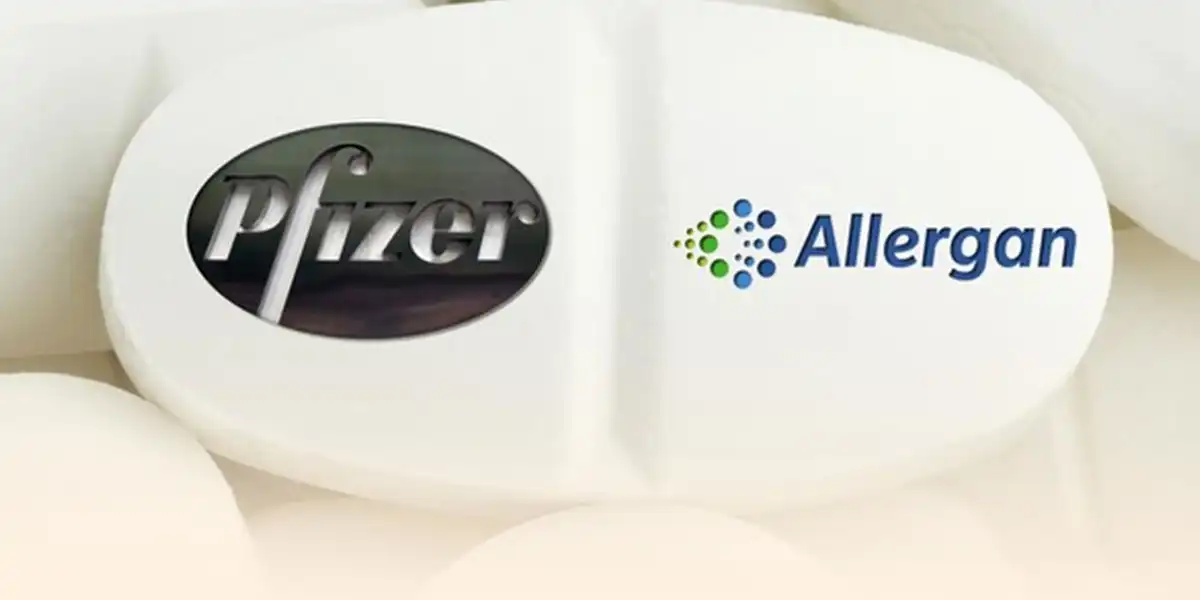
Nov 30, 2015
Blog Life Sciences “Pfizergan” Seals $160B Merger, Creating Dublin-Based Pfizer plc
Pfizer, Inc. marked its last Thanksgiving by inking a $160 billion megamerger with Dublin-based Allergan plc. Upon relocating to Ireland, Pfizer will become Pfizer plc. The deal, expected to close next year, puts Pfizer back on top as the biggest of the world’s Big Pharma—“Pfizergan” is expected to have annual sales of about $64 billion.
Still, it’s a bittersweet announcement for investors, who learned the merger will bring lower cost savings than they had hoped. Also, because the focus for now has to be on integrating Allergan, Pfizer has delayed by two years its decision on whether to sell its lower-margin division consisting of products that face generic competition. Part of the investor excitement leading up to the announcement had been the prospect of such a split.
In a statement, Pfizer said it expects the transaction to deliver more than $2 billion in operational synergies over the first three years after closing. Once the deal is finalized, former Pfizer shareholders will own about 56% of the combined company. Brent Saunders, Allergan’s current CEO, will serve as president and COO of the combined company. “He will be responsible for the oversight of all Pfizer and Allergan’s combined commercial businesses, manufacturing, and strategy functions,” according to a joint statement issued by the companies. Pfizer's Ian Read will be CEO of the combined company. Pfizer already has approximately 3,200 employees at six locations in Ireland and says it has invested $7 billion in Irish operations since opening its first site there in 1969.
The Pfizergan meld is one of the latest in a year that has already witnessed frenetic M&A activity within the drug industry. With deals worth $200 billion, pharma M&A activity was overshadowed only by that of the tech, media, and telecom sector for the year's first half, according to Deloitte. And, a recent survey by Reed Smith in collaboration with Mergermarket reveals that 94% of life sciences companies are planning an acquisition in the next year; 87% are looking for cross-border deals. For many of these companies, acquisitions are now the preferred way to deliver the growth rates their investors have become accustomed to. M&A began gathering steam in 2014 and the trend has continued. In the first half of 2015, deal value increased 53% compared with the same period last year.
The second half of 2015 kicked off with a flurry of new transaction announcements. Interestingly enough, these included Teva Pharmaceutical’s $40.5 billion purchase of Allergan’s generics division, which at the time was the largest deal announced in 2015. Allergan was acquired by Actavis for approximately $70.5 billion in a deal that closed in March 2015. Actavis subsequently changed its name and the newly combined Allergan became the fastest-growing pharma company. Legacy Allergan was up 91% last year, and Actavis was up 53% last year (Yahoo Finance). Such growth no doubt made Allergan an attractive target for Pfizer. In an interview with CNBC, Pfizer CEO Ian Read said the deal is not just about tax benefits, but also about driving greater growth.
According to the Reed Smith/Mergermarket analysis, 71% of companies see tax-related strategies that offer cost savings as the most likely route to recovery of investment costs and mitigation of deal risks. In Ireland, where “Pfizergan” will be domiciled, corporate income taxes are a lot lower than in the United States. By moving its headquarters, New York-based Pfizer could, in principle, get to cut its tax rate to 5%, the level paid by Allergan last year. While in reality it may not be that low, Pfizer has said its combination with Allergan would trim its effective tax rate to about 17% or 18% from roughly 25%.
Pfizer’s trans-Atlantic move is the biggest-ever instance of a US company reincorporating overseas to lower its taxes. The financial maneuver has sparked political debate in the United States. Last year, the Congressional Budget Office estimated that such inversion deals would cost the US Treasury $19.5 billion in lost tax revenue over the next decade. The US Treasury has been taking steps to limit the benefits of tax inversion deals, but action from Congress is also needed.
Indeed, Pfizer and CEO Ian Read have drawn sharp rebuke from politicians on both sides of the aisle. On the flip side, high tax rates in the United States meant that Pfizer was competing against foreign rivals “with one hand tied behind our back,” as Read has put it. Amid the chorus of consumer and political outcry, Read has a fiduciary duty to serve his shareholders’ interests. On the surface, it’s a “simple” economic decision but certainly not a straightforward one; the web of ramifications is complex.
In today’s fast-paced biomedical world, researchers and pharmaceutical companies...

Radiopharmaceuticals represent a cutting-edge frontier in modern medicine, offer...

Implantable Remote Patient Monitoring (IRPM) devices are revolutionizing healthc...

We are your trusted research partner, providing actionable insights and custom consulting across life sciences, advanced materials, and technology. Allow BCC Research to nurture your smartest business decisions today, tomorrow, and beyond.
Contact UsBCC Research provides objective, unbiased measurement and assessment of market opportunities with detailed market research reports. Our experienced industry analysts assess growth opportunities, market sizing, technologies, applications, supply chains and companies with the singular goal of helping you make informed business decisions, free of noise and hype.